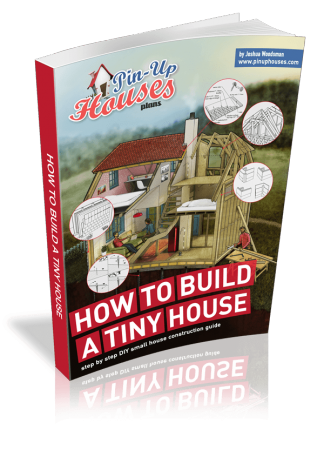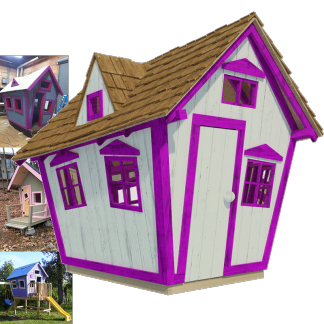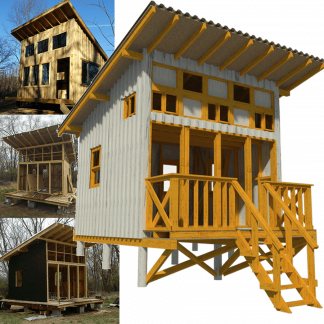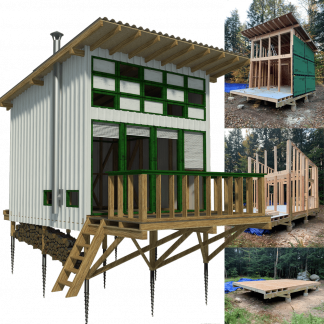In the rental property industry, bigger is, in fact, not always better. While bigger properties may allow greater rental income, these will also need a greater amount of maintenance, longer vacancies, and much more difficulty generally attracting tenants.
Smaller units are easier to maintain, yet they do not always offer the type of return you may be hoping for. As an investor, finding the right mix between property size and rental income is important to maximize your returns. Read below as we discuss the interesting relationship between property size and rental income.
How Well-Designed Floor Plans Maximize Property Appeal
Having a clearly thought-out space provides the right flow within a living space, positively impacting the property’s overall functionality and comfort. Renters can get that sense when they walk into a house and it just feels…right? That is the hallmark of a good floor plan.
Such thoughtful designs attract buyers or renters and set a property apart in a crowded marketplace. As an example, a house that flows from the kitchen to the living room is excellent for entertaining, while one where bedrooms are set apart from common areas provides a great deal of peace and quiet.
A poorly planned layout can discourage possible tenants faster than you can say “awkward hallway.” No one wants to wonder why the bathroom door swings to face the dining room or squeaks past furniture. A well-planned floor plan uses every square foot wisely, gets in the light, and maximizes usable space. For renters or buyers, it is often enough to keep a property on the market or have them ready to move in as soon as possible.
Don’t undervalue the impact of a well-designed floor plan if you want to improve the appeal of your home. It’s where comfort, functionality, and style come together. Bay Property Management Group can provide strategies to improve your ROI with property upgrades.
Correlation Between Size and Rent
- Higher Potential Rental Income
When it comes to rental income, the size of a property usually has a major bearing on it. Larger properties tend to have the scope for attracting higher rents, but again, it’s not just about square footage. When you know how to calculate property value based on rental income, you learn what matters in space provision and how well it meets your potential tenants’ needs. A spacious three-bedroom apartment may appeal to growing families or roommates looking to split expenses. In contrast, a one-bedroom unit could appeal to young professionals looking for a budget-friendly option that makes life easy. Larger spaces generally allow greater flexibility, which gives rise to the potential for renting at a higher cost.
However, you should consider other factors, such as location, amenities, and layout. A large property in an obscure location may earn less than a smaller unit in an increasing neighborhood. Size is indeed important but operates most effectively when cubit relations in positioning and pricing of the property are strategically adopted. Balancing these elements is critical to maximizing rental income.
- Stable Cash Flow
While size is a very significant indicator for rental amounts, many other factors play important roles in determining a rental’s price. Large properties will often go for higher rents, and there seems to be reason to think that any rent increase will within itself translate into greater profits. The flip side is that larger properties imply larger responsibilities, for example, increased operating costs, greater chances of tenant turnover, and a more specific tenant profile. On the other end of the spectrum, smaller properties, like most studios/one-bedrooms, tend to attract their own fair share of demand. They are much easier to manage and attract a mixed-use group of renters including young professionals and retirees looking to downsize. The fact that the rent per unit is less shouldn’t matter, though regular occupancy means the steady cash flow that all landlords are looking for.
Most importantly, get to know your market. A large family home in the suburbs might offer great returns, while a smaller one in the hub of activity may yield equivalent returns. It is all about marrying the size of a property with sufficient demand to create a steady income stream. Whether you are a seasoned investor or just starting your investment portfolio, the correlation between the size of the property and rent is by no means universal. Your long-term success will depend on catering to the needs of your tenant and providing a steady cash flow.
Finding the Right Balance on Size and Rental Strategy
Size alone doesn’t guarantee you success. A large 4-bedroom home may seem like a win, but if renters within your area prefer compact apartments, you could be out of sync as an investor.
Finding a balance between a strategy that meets the tenant’s needs and the property’s size is important. Are you targeting young professionals looking for affordable, low-maintenance spaces? Understanding your audience helps shape your approach.
A smaller unit with smart design, good lighting, and thoughtful amenities can often rival the earnings of larger properties. Size matters, but how you leverage it within a well-planned rental strategy ensures happy tenants and stable cash flow. It’s all about meeting the rental demand while keeping your investment goals on track.
Conclusion
Bigger properties may be expected to return more with rent earnings compared to smaller properties, but they have their own challenges, plus greater operational costs. Smaller units tend to sell more easily, but it has to be done carefully to attract ideal rental tenants.
The secret lies in striking that sweet balance between knowing your market, adapting your approach to tenants’ desires, and ensuring that every square foot matters. As achieving a cozy studio or a large family home favors sizing with a proper rental strategy, that is just what tenants will appreciate and guarantee you a steady income flow.








